The Strange & Adventurous Life of Famed Author Ernest Hemingway
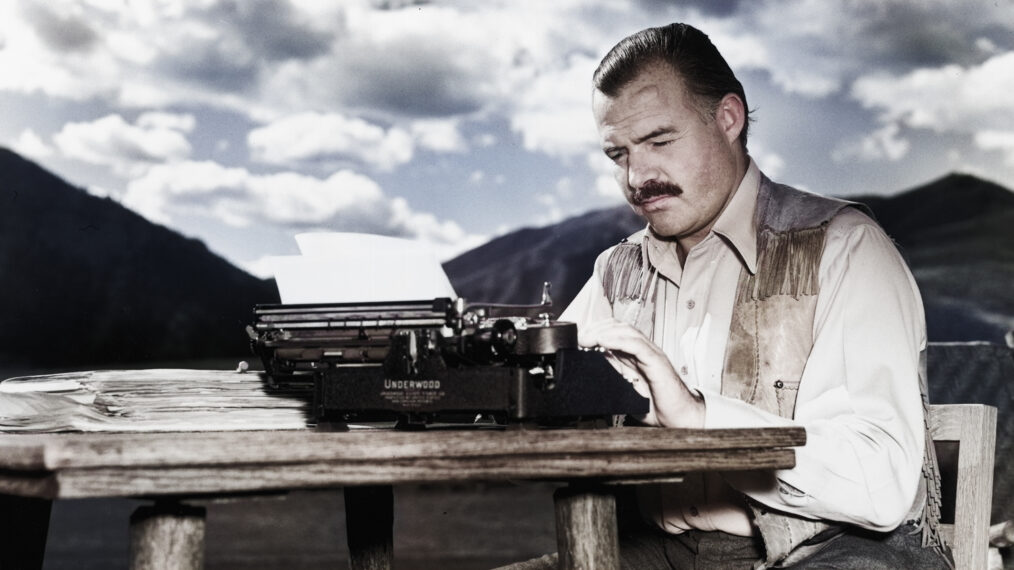
Nobel Prize-winning author Ernest Hemingway was unquestionably one of America’s greatest talents, and he had a very interesting (and quite difficult) life. Born in Oak Park, Illinois, the second of six children, he was rejected by the Army for poor eyesight but volunteered to drive an ambulance during World War I when he was 18. He was seriously wounded by mortar fire only a few months into his deployment, and his experiences recovering in a Milan hospital would pepper several of his novels, now considered classics.
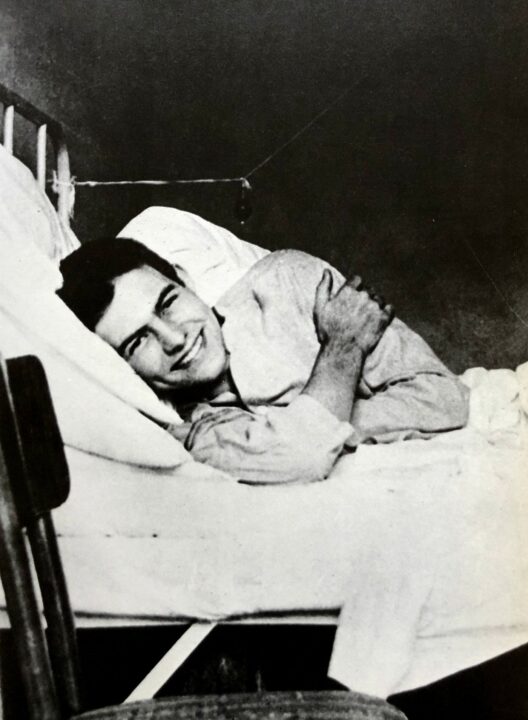
Wikipedia/public domain
Ernest Hemingway, July 1918, American Red Cross Hospital, Milan, Italy
He returned to North America in 1920 and was hired as a staff writer for the Toronto Star Weekly. Not long after that, he got married to the first of his four wives and moved to Paris, where he worked as a foreign correspondent. He spent much of the early 1920s in bars with many world-famous artists and authors such as Gertrude Stein, James Joyce and Pablo Picasso, eventually forming a lifelong friendship with F. Scott Fitzgerald, who had just published The Great Gatsby and inspired Hemingway to write his own novel.
The “Lost Generation,” which these lucky wunderkinds in Paris would later be called (a term invented by Gertrude Stein and popularized by Hemingway in The Sun Also Rises), was featured in the great 2011 Woody Allen film Midnight in Paris, in which Owen Wilson plays a frustrated screenwriter who gets transported back to Paris in the 1920s.
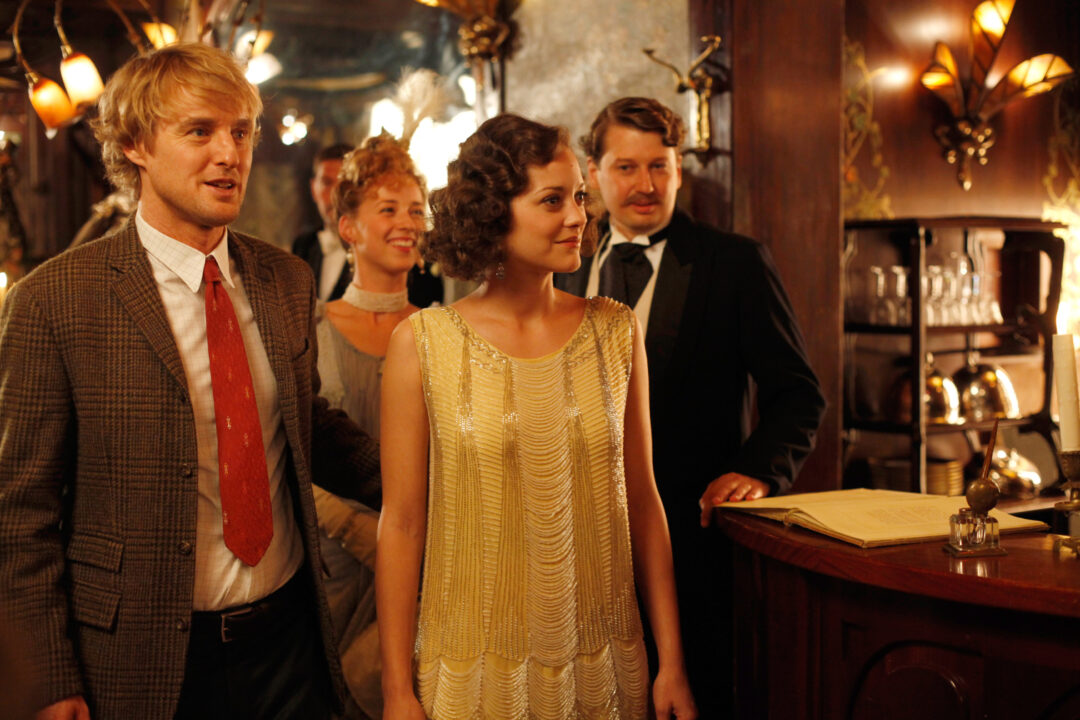
In 1926, Fitzgerald published his first novel, The Sun Also Rises, and in 1927 he returned to the U.S. He split with his first wife, with whom he’d had his first child, Jack, in 1923, and married his second wife, Pauline, with whom he would have two more children. The next few decades brought him much literary success with books such as A Farewell to Arms, To Have and Have Not and The Old Man and the Sea. He spent a lot of time abroad, hunting in Africa, covering the Spanish Civil War and World War II, even traveling to China with his third wife, who was on assignment there.
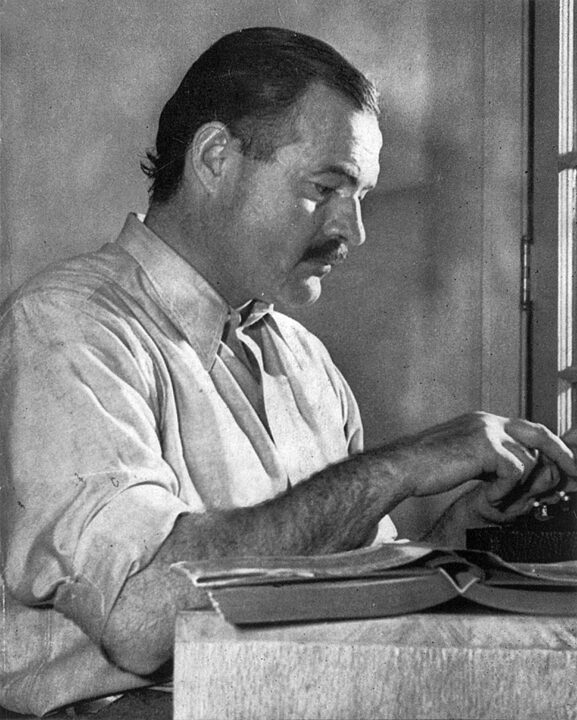
Wikipedia/Public Domain
Hemingway working on his book For Whom the Bell Tolls at the Sun Valley Lodge, Idaho, in 1939
When he was not abroad, he lived for much of the 1930s in Key West, Florida, and spent time in Idaho during hot summers. In the early 1940s, he moved to Cuba. Once in Cuba, he became enamored with cats, and he housed dozens of them on his property. Descendants of his cats live at his Key West home still to this day, and it is even an operating museum.
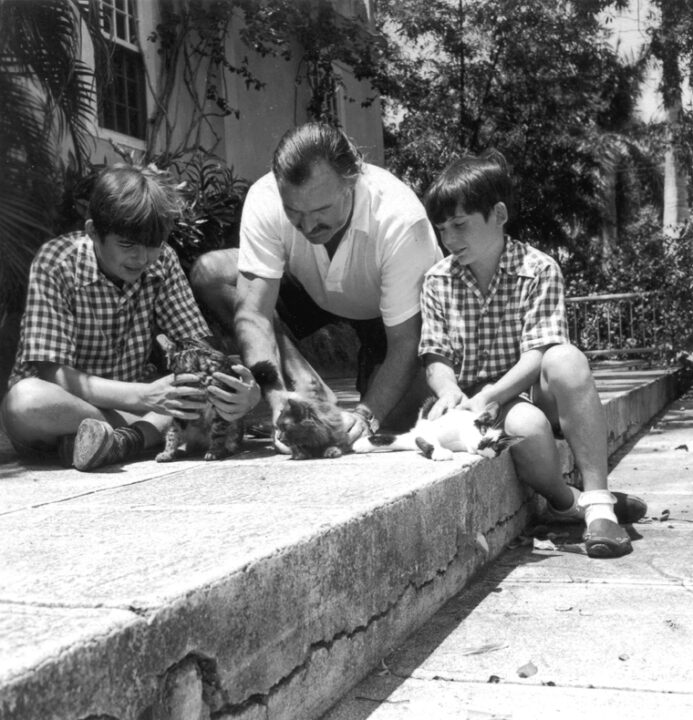
John F. Kennedy Presidential Library and Museum collection, Boston.
American Author Ernest Hemingway with sons Patrick (left) and Gregory (right) with kittens in Finca Vigia, Cuba.
In 1946 he married his fourth wife, Mary, then suffered a series of accidents and health problems and eventually fell into a long depression, caused by the deaths of many of his close literary friends. While in Africa in 1954, he was in not one but two airplane accidents, which caused more health problems and more depression. This was also the year he received a Nobel Prize, for The Old Man and the Sea, which he wrote in the span of eight weeks in 1951 while still living in Cuba — quite the impressive feat. In 1956, he traveled back to Paris, where he found trunks of notebooks filled with writing he’d stored at the Ritz in the 1920s. This inspired him to write his last book, a memoir called A Moveable Feast.
In 1959, he moved to Ketchum, Idaho, where he died two years later, shooting himself with his favorite gun while his wife slept upstairs, and leaving behind a treasure trove of American classics as well as three children and 12 grandchildren.
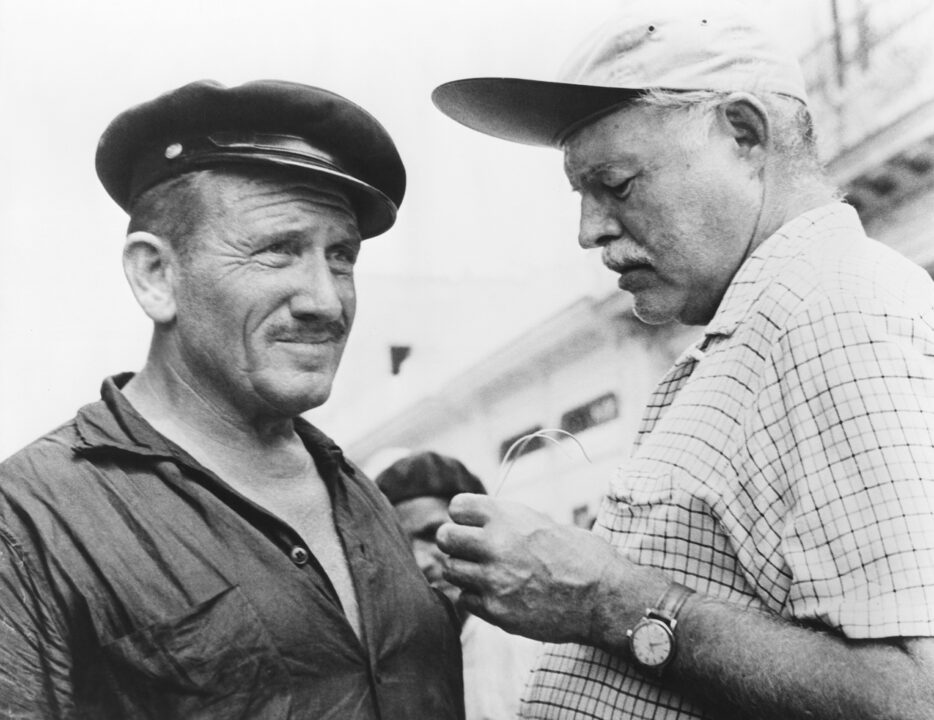
Everett Collection
Spencer Tracy and Ernest Hemingway on set of The Old Man and the Sea, 1958
A complicated man, to be sure.
But complicated men dominate much of 20th-century literature, and no one can say he didn’t live a very full life, short as it might have been. As Hemingway once said, “As a writer, you should not judge, you should understand.”
Carrying on the Hemingway Legacy
In addition to providing some of the most widely regarded novels in American history, several of Ernest Hemingway’s books would be translated to film and a few of his grandchildren would even go on to act in Hollywood, including sisters Margaux Hemingway — who also died of suicide 35 years later almost to the day (July 1, 1996) — Joan Hemingway and Mariel Hemingway, an actress you might recognize from the 1976 film Lipstick and the Woody Allen hit Manhattan. All three actresses were daughters of his first son, Jack.
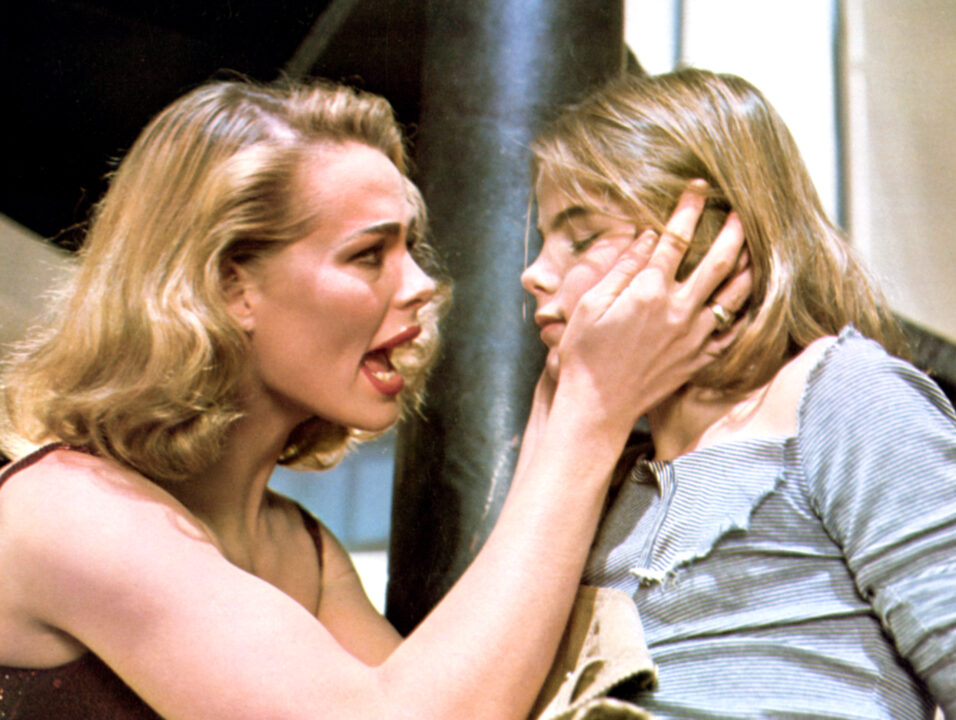
Everett Collection
In her 2013 documentary, Running From Crazy, Mariel said that she believed her late father, Jack Hemingway, sexually abused her sisters Margaux and Joan, and that he had a severe drinking problem like his famous father. Mariel has been vocal about the mental illness that runs in the Hemingway bloodline, claiming once that the family is cursed. In addition to her sister’s suicide, Ernest Hemingway’s father also killed himself, and so did two of his siblings.
There is also the sad story of Gloria Hemingway, Ernest’s transgender child, who was arrested at age 69 for entering a woman’s bathroom and died shortly thereafter at a women’s detention center. Gloria’s mother Pauline, Ernest’s second wife, died the same week from an “acute state of shock” resulting from this arrest and a subsequent argument with Ernest. (This was later attributed to a tumor on her adrenal gland, which caused excessive adrenaline to spike her blood pressure.)
Perhaps “cursed” is right!

Hollywood Dynasties
May 2023
Moviemaking is definitely in the family business for some of Hollywood’s most notable icons
Buy This Issue